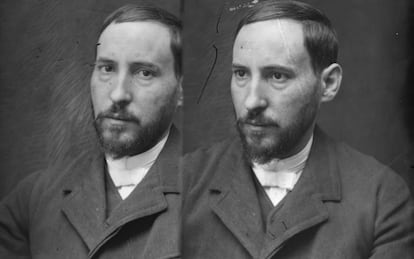A cry for the Cajal Museum

Strictly opinion pieces that reflect the author's own style. These opinion pieces must be based on verified data and be respectful of individuals, even if their actions are criticized. All opinion pieces by individuals outside the EL PAÍS editorial team will include, after the last line, a byline—no matter how well-known—indicating the author's position, title, political affiliation (if applicable), or main occupation, or any that is or was related to the topic addressed.

“It has been said many times that Spain's problem is a problem of culture. Indeed, if we wish to join the ranks of civilized peoples, we urgently need to intensively cultivate the wastelands of our land and our minds, saving for the prosperity and glorification of our nation all the rivers that flow into the sea and all the talents that are lost in ignorance.” These words are not just a reflection: they are a cry for research and education. They were spoken by Don Santiago Ramón y Cajal on May 1, 1922, upon retiring from his academic positions. Their echo resonates today more than ever and reminds us that investing in knowledge is not an option: it is a vital necessity for the future of our country.
In February 2021, the Council of Ministers agreed to create a working group to promote and disseminate the legacy of Santiago Ramón y Cajal. Some of us have had the honor of being part of it and, in parallel, have promoted numerous exhibitions, conferences, publications, scientific meetings, and citizen science workshops.
In May 2022, the Ramón y Cajal Research Year officially began, declared an Event of Exceptional Public Interest. The Government entrusted the Spanish Foundation for Science and Technology (FECYT) with the physical realization of the events and activities, as well as the management of tax-incentivized donations for their implementation. During the presentation of the Cajal Year at the Círculo de Bellas Artes in Madrid, the Minister of Science, Innovation and Universities, Diana Morant, stated that "this three-year period will culminate with the creation of a brain museum named after Santiago Ramón y Cajal to value and protect his work and thought." For his part, Prime Minister Pedro Sánchez pledged to "strengthen the Cajal Legacy with the creation of a museum dedicated to the functioning of the brain, which will begin operations at the end of this Cajal Year."
The Cajal Legacy is one of our greatest cultural treasures. Donated by Don Santiago and completed by members of his family, it has always been available to the scientific community, safeguarded by the Cajal Institute. Since 2017, it has been included in UNESCO's Memory of the World and, since 2024, has enjoyed the highest protection in our country with the category of Asset of Cultural Interest. In June 2024, Royal Decree 590/2024 was approved to create the Cajal Museum as a state-owned National Museum.
Today, May 31, 2025, marks the end of the Cajal Year. Although the official program lists only 21 events, collective enthusiasm has led to hundreds of activities throughout Spain and in cities around the world.
We ask that the necessary steps be taken to create a modern and ambitious Cajal National Museum as soon as possible, in response to the commitment of the Ministry of Science, Innovation and Universities. The revolution in neuroscience that is emerging today has its origins in the visionary work of Cajal, who, with his microscope and his drawings, assembled the universe of knowledge that allows us to understand the fundamental secrets of our thinking machine.
Demanding greater recognition for Cajal means demanding more research and more progress for our country. Furthermore, our Nobel Prize represents the values of effort, hard work, perseverance, sacrifice, and independent judgment, all of which are so necessary for our society today. Our vision is that the Cajal National Museum will be the epicenter of the Cajal Spaces Network and could become an international benchmark in neuroscience, artificial intelligence, and neuro-rights .
We ask the Spanish government to fulfill its commitment by creating a National Cajal Museum worthy of the most scientifically brilliant, socially committed, and globally recognized figure in our country.
Signatories:
- Alberto J. Schuhmacher
- Ana Mª Fermoso García
- Ana Purificación Velasco Criado
- Belén Ramón y Cajal Agüeras
- Clara Isabel Colino Gandarillas
- Cristina Nombela
- David Ezpeleta
- Elena Giné Domínguez
- Esther Basilia del Brío González
- Fernando de Castro Soubriet
- José Antonio Montejo Urioste
- José Francisco Adserias Vistué
- José María Mur
- José María Serrano Sanz
- José Miguel Mateos Roco
- José Ramón Alonso
- Juan A. de Carlos
- Juan Ramón y Cajal Agüeras
- Juan del Río-Hortega Bereciartu
- Juanjo Rubio
- Mara Dierssen
- María Urioste Ramón y Cajal
- Orlando Castellano
- Pedro Uhalte
- Pilar Ramón y Cajal Agüeras
- Santiago Ramón y Cajal Agüeras
- Santiago Ramón y Cajal Asensio
- Yolanda Polo Redondo
EL PAÍS


%3Aformat(jpg)%3Aquality(99)%3Awatermark(f.elconfidencial.com%2Ffile%2Fa73%2Ff85%2Fd17%2Fa73f85d17f0b2300eddff0d114d4ab10.png%2C0%2C275%2C1)%2Ff.elconfidencial.com%2Foriginal%2F754%2F0f7%2F944%2F7540f7944bb849ff984ed415e4b0729d.jpg&w=3840&q=100)
